1
HOME > Tips & Advice >
WHAT MAKES A GOOD MEN'S SHIRT?
Written by Ivan Yaskey in Tips & Advice on the 14th July 2020
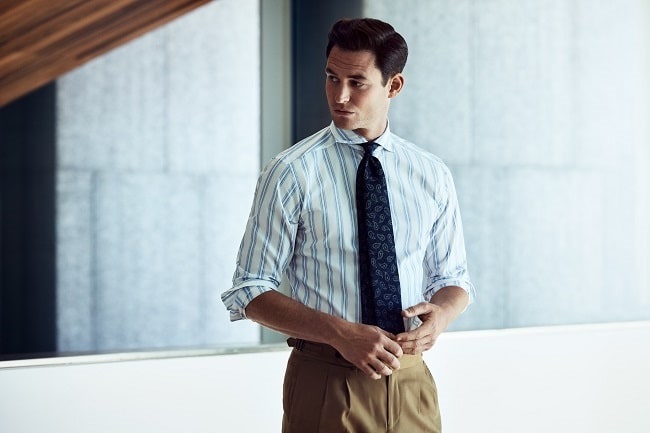
If it’s not a T-shirt, pullover, or sweater, it’s not a button-front shirt, right? Not quite. Buttoned, collared garments characterise most of our wardrobes, but double-notch or camp collars and polos stand out in categories of their own. Dress shirts, stiff collared and with a series of buttons, are also too specific: Unless you’ve worked in a formal, traditional office environment, how often do you really sport this garment? Our guess: a couple times per year at best. For our purposes here, button-front shirts are synonymous with Oxfords. Sometimes, they’re a crisp white; at others, stripes or a pattern covers its surface. Whatever your preference, they’re in weekly rotation, no matter where you go or what you do. Many of us know what it’s like to wear an Oxford that’s not quite “right.” Perhaps the hem narrows too close to the hips, or extra fabric balloons around the arms. Or, that slim fit is extra-fitted, leaving marks and feeling constricted around your biceps. Then, there’s the whole issue of ironing and fabric quality.
Truth be told, a good Oxford shirt, regardless of pattern or colour, has lots of mileage and versatility. To the office, you seem effortlessly sharp and put together, and it’s a decent companion with jeans or chinos and a blazer jacket, no matter the dress code. At the same time, in a more minimalist menswear world, Oxfords themselves are a wardrobe foundation that’s ready for everyday usage but can transition to more upscale affairs – think cocktail parties with the right suit – and dressed-down ones, when combined with distressed or ripped denim. And, of all fabrics out there, the cotton or cotton blend holds up more than solid polyester and fancier yet more delicate silks, and outlasts any novelty trend – think lace and sheer shirts from the past few years. On this note, because not every Oxford or button-front shirt is created equal, think about the following:
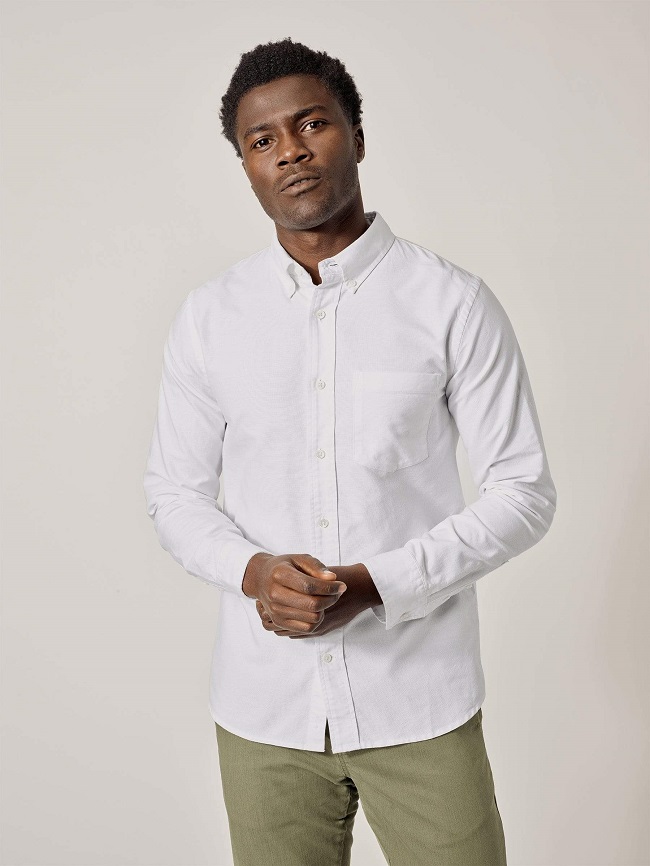
Material
These days, button-front shirts and even specifically Oxford shirts utilise a spectrum of fabrics, from Italian cotton or Japanese selvedge denim for a sturdier feel to linen for greater breathability to synthetic blends incorporating polyester or rayon for a lighter feel and greater wrinkle resistance. Traditionally, one of three woven cotton fabrics makes up a button-front shirt. Oxford cloth uses a basket weave and medium weight for more texture. Twill, by contrast, features a diagonal weave and more body. Poplin, more common for warm-weather shirts, uses a tighter, crisscross weave that results in a lighter, more breathable fabric. Because cotton and linen both wrinkle easily and subsequently require ironing before wear, wrinkle-resistant shirts have taken off in recent years. Eton started pioneering the technology in the early ‘90s, but since the early 2010s, we’ve noticed more brands weave in some polyester and spandex. The cotton-synthetic hybrid, in turn, is less likely to wrinkle and can be ironed in less time, if it needs to be at all. The “best” material here ultimately comes down to personal preference and the season. On the classic end, you can’t go wrong with Oxford or poplin, but if you prioritise convenience, a wrinkle-resistant or wrinkle-free fabrication may be a stronger everyday option.

Fit and Cut
Fit, to some extent, might be subjective, especially in a time of regular, wider-cut, and muscle shirts. Strictly thinking in terms of long-term wear, that oversized silhouette won’t likely cut it for the office, and that ultra-slim style, even with the hint of spandex added for flexibility, goes from flattering to restrictive with a five-pound weight gain. A decent shirt falls within that slim-to-regular realm: You’re able to move without feeling a pinching sensation or seeing strained button holes, but you’re also not swimming in tons of fabric. No matter your body type, the rule applies: Your shape should be defined, but not to the point of discomfort. A couple of approaches exist for reaching this. One, know your measurements for your waist, hips, shoulders, and neck or collar. If you’ve ever shopped for vintage menswear, you’ve likely come across shirts sized by numbers rather than the usual small-medium-large assortment. The approach, due to an ethos of precision over approximation, has started returning, especially because not everyone has the cash or time to get every single garment tailored just so.
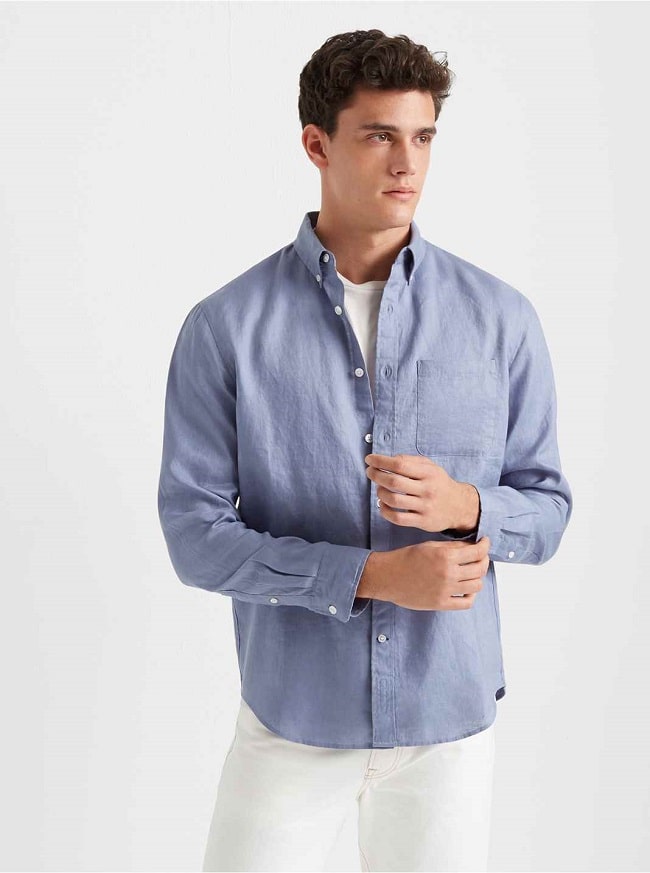
Beyond that holistic view, a shirt's fit involves a few finer aspects:
• Space around the collar: As a basic rule, you should be able to slip two fingers underneath the fabric after it’s buttoned all the way.
• Fit after washing: Especially with materials known to shrink or stretch, a wash can change the fit and feel of a garment. Something that feels slightly too spacious may end up just right after a wash cycle.
• Short versus long sleeves: The latter is always preferred, as the former is a considerably more casual garment. Nevertheless, consider where you’ll be wearing your shirts and how you style them. If it’s with a suit or sport coat, defer to the longer length. Yet, if you default to jeans, even for the workplace, having a few short sleeves makes more sense for your wardrobe.
• The shirttail: Yes, the no-tuck shirt, with a shortened but still rounded tail, has been a thing over the past couple of years. Also overlapping with how you wear a shirt, these shorter shirttail shirts predictably don’t tuck in well, unless you’re sporting a pair of high-waist trousers. Thus, if you’ll be expected to look presentable in an office environment, consider the longer, more classic shirttail for this purpose.
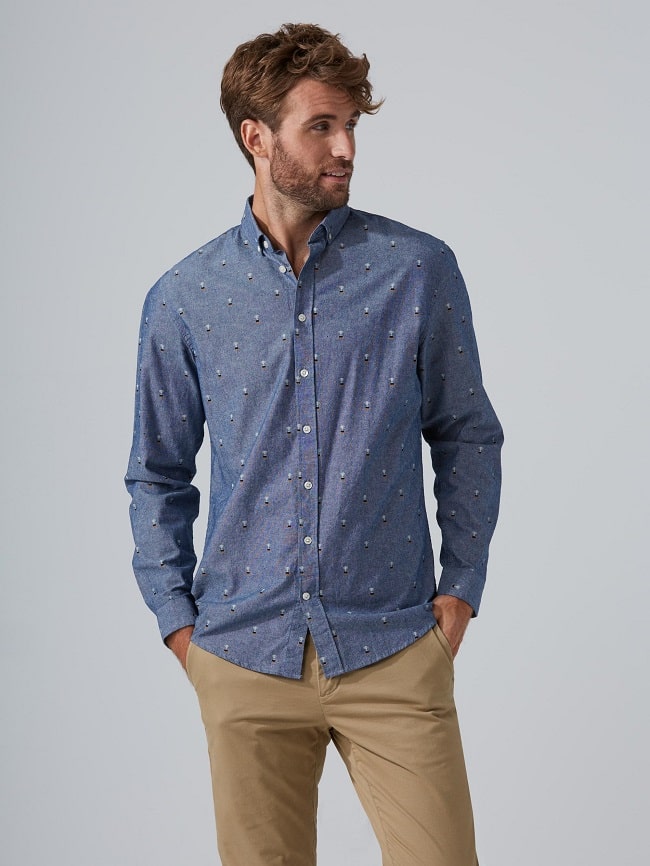
Colour and Print
You’ll stumble upon countless guides, lists, and roundups for finding the perfect white shirt, and while this shirt’s fairly essential, it shouldn’t be the be-all-end-all of your Oxford game. Yes, start here – a white button-front truly does go with everything – but build upon it with some blues, charcoal, and other dark-to-neutral solid hues. In spite of other guides telling you to play it carefully with prints, menswear’s been a pattern-lover’s paradise for the past five years or so. Although trend-of-the-moment styles eventually look dated, smaller plaids, narrow vertical stripes, and muted florals add variety and some character to what’s basically your wardrobe’s bread and butter, and prevent it from getting stale too quickly.
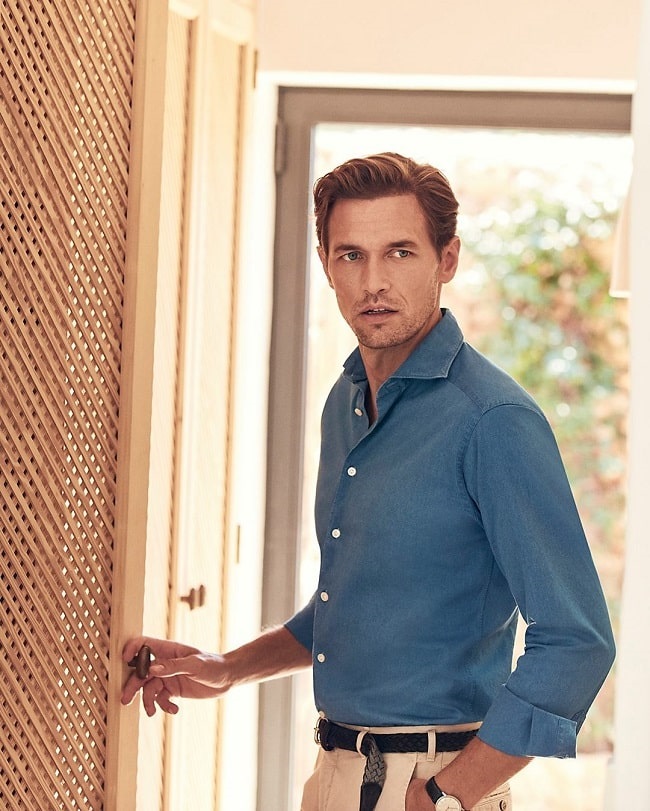

Trending
2
3
4
5
6
7
8
9
10










